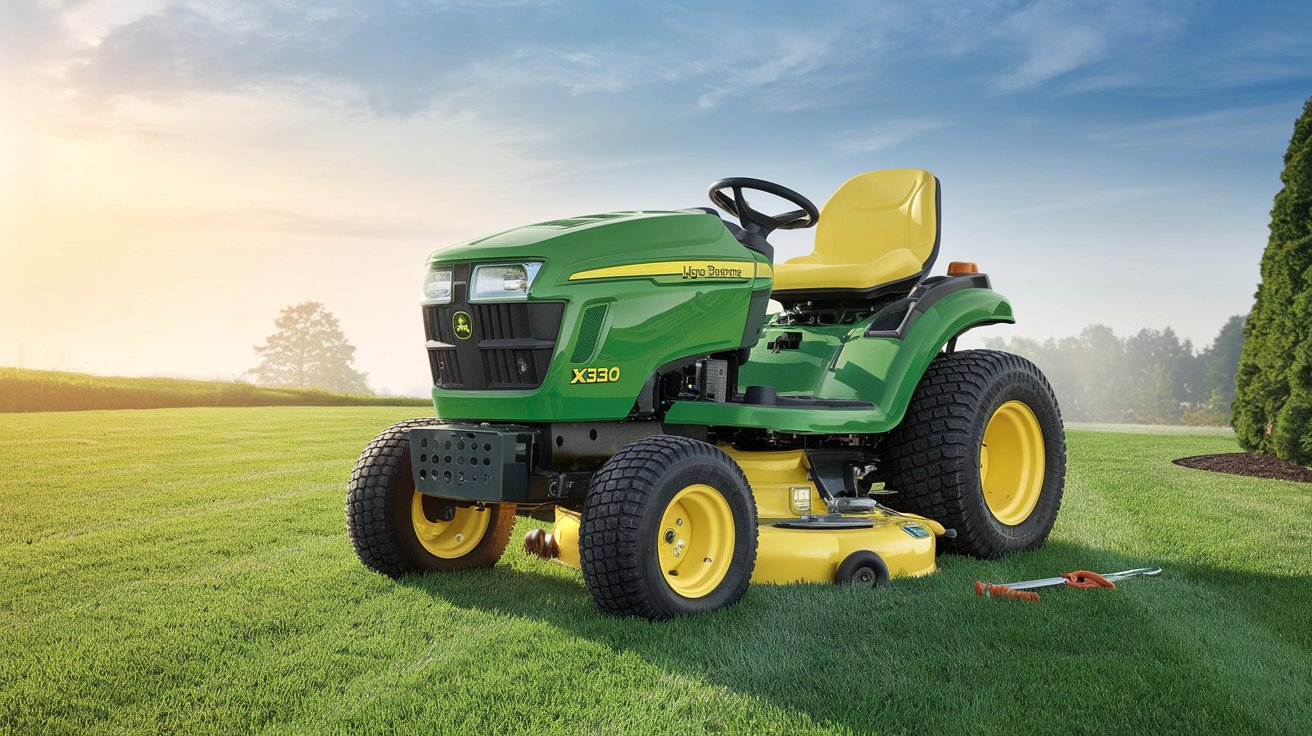The most common John Deere X330 problems include engine starting issues, uneven cutting performance, transmission troubles, battery drainage, and excessive vibration. These issues can often be resolved through routine maintenance, proper adjustments, and timely part replacements.
Curious about how to prevent these problems or fix them yourself? Discover actionable solutions, maintenance tips, and expert advice to keep your X330 running smoothly. Read on to uncover practical insights and avoid costly repairs!
This guide highlights the top 10 issues users face with the X330 and provides actionable steps to address them effectively.
1. Engine Fails to Start
Causes:
- Dead or weak battery
- Faulty spark plugs
- Fuel-related problems (e.g., stale fuel or clogged fuel lines)
Solutions:
- Check the Battery: Use a multimeter to test the battery voltage. Replace if it’s below 12.6 volts.
- Inspect Spark Plugs: Clean or replace dirty or worn-out spark plugs.
- Ensure Fresh Fuel: Drain old fuel and refill with fresh, clean gasoline. Additionally, clean the fuel lines and replace the fuel filter if necessary.
2. Uneven Cutting Performance
Causes:
- Dull or damaged mower blades
- Incorrect deck leveling
- Debris accumulation under the deck
Solutions:
- Sharpen or Replace Blades: Regularly inspect the blades for sharpness and damage. Replace as needed.
- Level the Deck: Adjust the mower deck to ensure it is evenly aligned.
- Clean the Deck: Remove built-up grass and debris to prevent uneven cuts.
3. Transmission Problems
Causes:
- Overheated transmission system
- Low transmission fluid levels
Solutions:
- Check Fluid Levels: Ensure that the transmission fluid is at the recommended level. Top up with the manufacturer-approved fluid if needed.
- Avoid Overloading: Reduce heavy loads and allow the system to cool during extended use.
4. Battery Draining Quickly
Causes:
- Faulty alternator
- Loose or corroded battery connections
Solutions:
- Test the Alternator: Use a multimeter to check if the alternator is charging the battery properly. Replace if defective.
- Clean Connections: Tighten and clean battery terminals to ensure proper connectivity.
5. Steering Difficulties
Causes:
- Worn-out steering components
- Low tire pressure
Solutions:
- Inspect Steering Components: Check for wear and tear in the steering linkage. Replace damaged parts.
- Maintain Tire Pressure: Ensure all tires are inflated to the recommended PSI levels.
6. Excessive Vibration During Operation
Causes:
- Imbalanced or loose blades
- Damaged belts
- Worn-out bearings
Solutions:
- Secure Blades: Tighten loose blades and balance them to reduce vibration.
- Replace Damaged Belts: Inspect belts for cracks or wear and replace if needed.
- Check Bearings: Lubricate or replace worn bearings to ensure smooth operation.
7. Overheating Issues
Causes:
- Clogged air filters
- Low coolant levels
- Debris blocking airflow
Solutions:
- Clean Air Filters: Replace dirty air filters to improve airflow.
- Check Coolant Levels: Ensure the engine has the appropriate coolant level. Top up if necessary.
- Remove Debris: Clean the engine area and cooling fins regularly to enhance ventilation.
8. Deck Belt Slipping
Causes:
- Worn-out or stretched belt
- Misaligned pulleys
Solutions:
- Replace the Belt: Inspect the belt for wear and replace if it’s stretched or frayed.
- Align Pulleys: Adjust pulley alignment to ensure proper tension and smooth belt operation.
9. Difficulty Engaging PTO
Causes:
- Faulty PTO switch
- Wiring issues
Solutions:
- Test the PTO Switch: Use a multimeter to verify the switch’s functionality. Replace if faulty.
- Inspect Wiring: Look for loose or damaged wires and repair or replace them as needed.
10. Noise During Operation
Causes:
- Loose components
- Insufficient lubrication
Solutions:
- Tighten Loose Parts: Inspect the machine for any loose nuts, bolts, or fittings and secure them.
- Lubricate Moving Parts: Regularly apply grease or oil to moving components to reduce friction and noise.
Maintenance Tips to Prevent Problems
Proactive maintenance is key to minimizing “John Deere X330 problems.” Here are some tips to keep your lawn tractor running smoothly:
- Regular Inspections: Periodically check for signs of wear, leaks, or damage.
- Follow the User Manual: Adhere to the maintenance schedule outlined in the manual.
- Use Genuine Parts: Always opt for manufacturer-approved replacement parts to ensure compatibility and longevity.
- Store Properly: Keep your X330 in a dry, covered area to protect it from the elements.
When to Seek Professional Help
While many of the issues listed above can be resolved at home, some may require professional assistance. If you’re unsure about tackling a problem or if it persists despite your efforts, contact a certified John Deere technician for expert support.
FAQs
1. How often should I service my John Deere X330?
It is recommended to perform routine maintenance, such as oil changes and air filter replacements, every 50 hours of use or at least once a year. Consult the owner’s manual for detailed schedules.
2. Why is my X330 losing power?
Power loss can result from clogged air filters, stale fuel, or a dirty carburetor. Regular cleaning and timely fuel replacement can resolve this issue.
3. What type of oil should I use for my X330?
John Deere recommends using SAE 10W-30 oil with API classification SG or higher for optimal engine performance.
4. How do I adjust the cutting height on my X330?
Use the height adjustment lever located near the driver’s seat. Refer to the user manual for specific instructions on achieving the desired cutting height.
5. Can I use my X330 on slopes?
Yes, the X330 can handle slopes up to 15 degrees. However, avoid mowing on wet or slippery terrain for safety reasons.
Conclusion
Understanding and addressing common “John Deere X330 problems” can enhance the performance and lifespan of your lawn tractor. By staying proactive with maintenance and promptly resolving issues, you can ensure that your X330 remains a dependable companion for years to come. Have you experienced any of these problems? Share your thoughts and solutions below—we’d love to hear from you!

